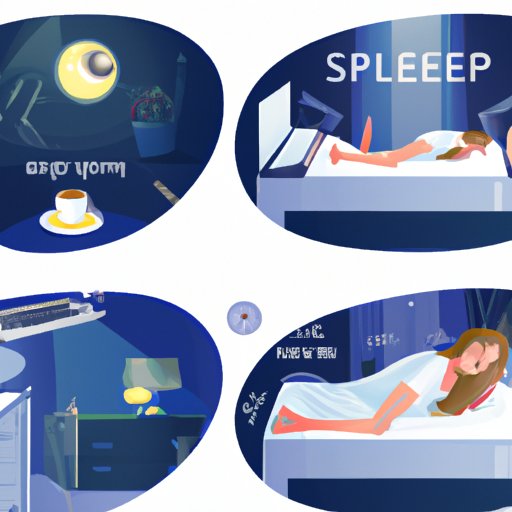
I. Introduction
Perhaps you’ve experienced the unsettling feeling of waking up from sleep, only to find that you can’t move your body or speak. You’re not alone. This all-too-common phenomenon is known as sleep paralysis, and while it can be frightening and distressing, there are solutions and coping mechanisms that can help you overcome it. In this article, we’ll explore the causes of sleep paralysis and provide tips and solutions to help you overcome it.
II. Understanding Sleep Paralysis
Sleep paralysis is defined as a state of consciousness in which a person is aware but unable to move or speak. It is often accompanied by feelings of pressure on the chest, difficulty breathing, and a sense of impending doom. While the exact cause of sleep paralysis is unknown, it often occurs when the body is in a state of transition between wakefulness and sleep, during which time the brain may be awake while the body remains in a state of sleep.
Some of the potential triggers of sleep paralysis include sleep deprivation, irregular sleep patterns, stress, anxiety, and certain medications. While sleep paralysis is not typically considered harmful or dangerous, it can be distressing and disruptive to sleep, leading to fatigue and other health issues.
III. Establishing a Healthy Sleep Routine
Establishing a healthy sleep routine is essential for combatting sleep paralysis, as irregular sleep patterns and sleep deprivation can trigger episodes. Some sleeping practices to follow include creating a regular sleep schedule, avoiding caffeine and alcohol before bedtime, and limiting screen time in the evening. Additionally, creating a sleep-conducive environment is key. Tips for making a better sleep environment include keeping the room cool and dark, minimizing noise, and avoiding activities in bed that are not related to sleep.
IV. Addressing Underlying Medical Issues
While sleep paralysis is not typically indicative of an underlying medical issue, some individuals experiencing anxiety or panic disorders may be more prone to episodes. In such cases, seeking professional or medical assistance is essential to addressing these underlying issues and reducing the occurrence of sleep paralysis. Treatment for anxiety and panic disorders may include cognitive-behavioral therapy, psychotherapy, or medication.
V. Practicing Relaxation Techniques
Relaxation techniques, such as deep breathing and meditation, can be helpful in calming the mind and body and reducing the chances of sleep paralysis. Regular practice of relaxation techniques can promote relaxation and reduce stress, creating a healthier and more relaxed environment for sleep. Some practical tips for incorporating relaxation techniques into your daily routine include taking deep breaths before bed, practicing progressive muscle relaxation, and incorporating yoga or meditation into your regular routine.
VI. Making Physical Changes in the Sleep Environment
Certain physical changes in the sleep environment can also help reduce the occurrence of sleep paralysis. Specific changes might include using a white noise machine or earplugs to reduce external noise, keeping the bedroom cool and dark to create a more conducive sleep environment, and reducing light exposure in the evening to promote relaxation.
VII. Medication and Therapy
In some cases, prescribed medication or therapy may be necessary to help those experiencing severe or life-altering cases of sleep paralysis. It is important to seek professional medical advice before considering medication or therapy, as there may be underlying medical issues that need to be addressed first. Antidepressants and anti-anxiety medication are two potential treatment options that have been shown to reduce the impact of sleep paralysis.
VIII. Conclusion
Sleep paralysis can be a distressing and disruptive experience, but there are solutions and coping mechanisms that can help mitigate its impact. By establishing a healthy sleep routine, addressing underlying medical issues, practicing relaxation techniques, making physical changes in your sleep environment, and seeking professional medical advice when necessary, you can take steps towards overcoming sleep paralysis and getting the restful sleep your body needs.




